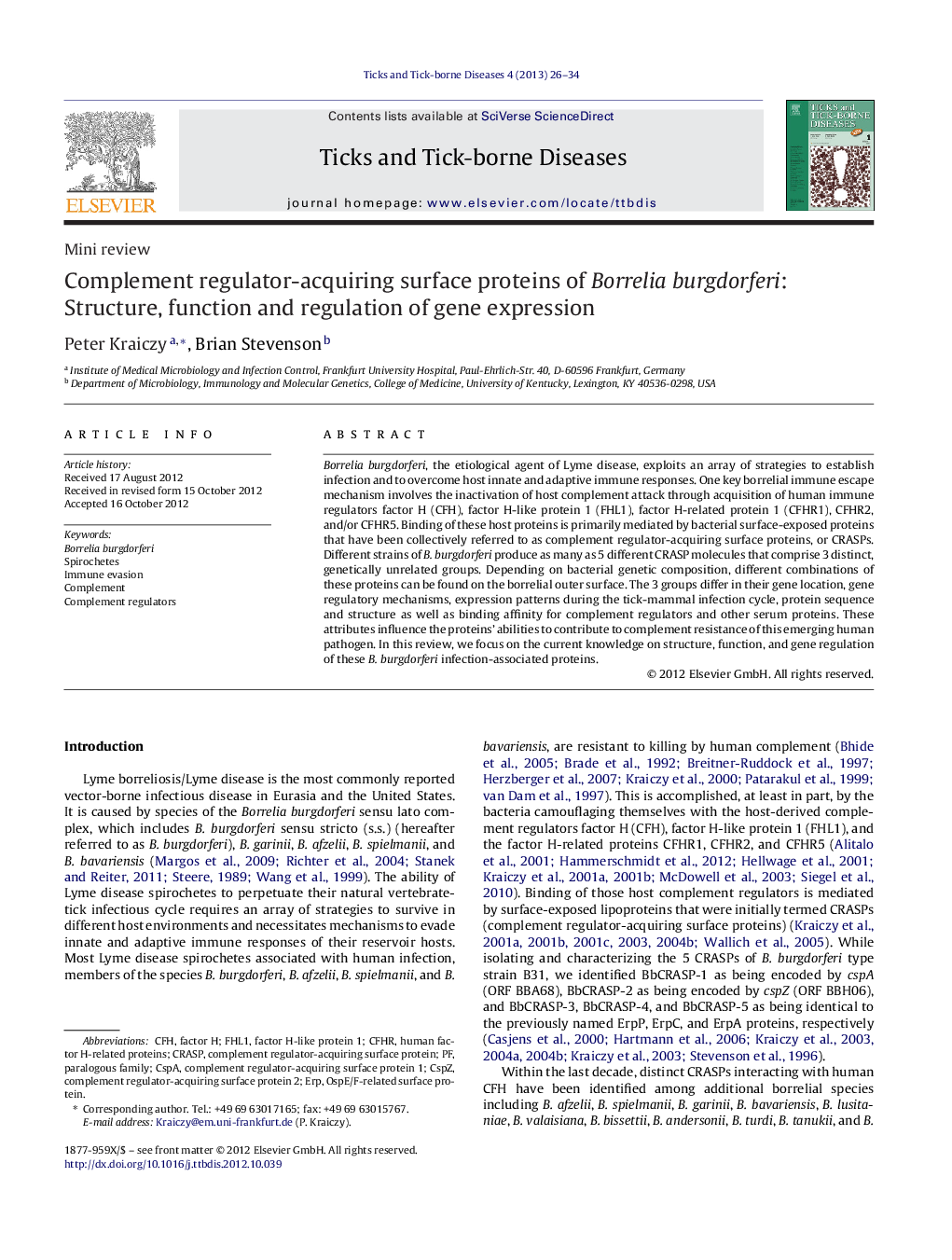| کد مقاله | کد نشریه | سال انتشار | مقاله انگلیسی | نسخه تمام متن |
|---|---|---|---|---|
| 2474225 | 1555965 | 2013 | 9 صفحه PDF | دانلود رایگان |

Borrelia burgdorferi, the etiological agent of Lyme disease, exploits an array of strategies to establish infection and to overcome host innate and adaptive immune responses. One key borrelial immune escape mechanism involves the inactivation of host complement attack through acquisition of human immune regulators factor H (CFH), factor H-like protein 1 (FHL1), factor H-related protein 1 (CFHR1), CFHR2, and/or CFHR5. Binding of these host proteins is primarily mediated by bacterial surface-exposed proteins that have been collectively referred to as complement regulator-acquiring surface proteins, or CRASPs. Different strains of B. burgdorferi produce as many as 5 different CRASP molecules that comprise 3 distinct, genetically unrelated groups. Depending on bacterial genetic composition, different combinations of these proteins can be found on the borrelial outer surface. The 3 groups differ in their gene location, gene regulatory mechanisms, expression patterns during the tick-mammal infection cycle, protein sequence and structure as well as binding affinity for complement regulators and other serum proteins. These attributes influence the proteins’ abilities to contribute to complement resistance of this emerging human pathogen. In this review, we focus on the current knowledge on structure, function, and gene regulation of these B. burgdorferi infection-associated proteins.
Journal: Ticks and Tick-borne Diseases - Volume 4, Issues 1–2, February 2013, Pages 26–34